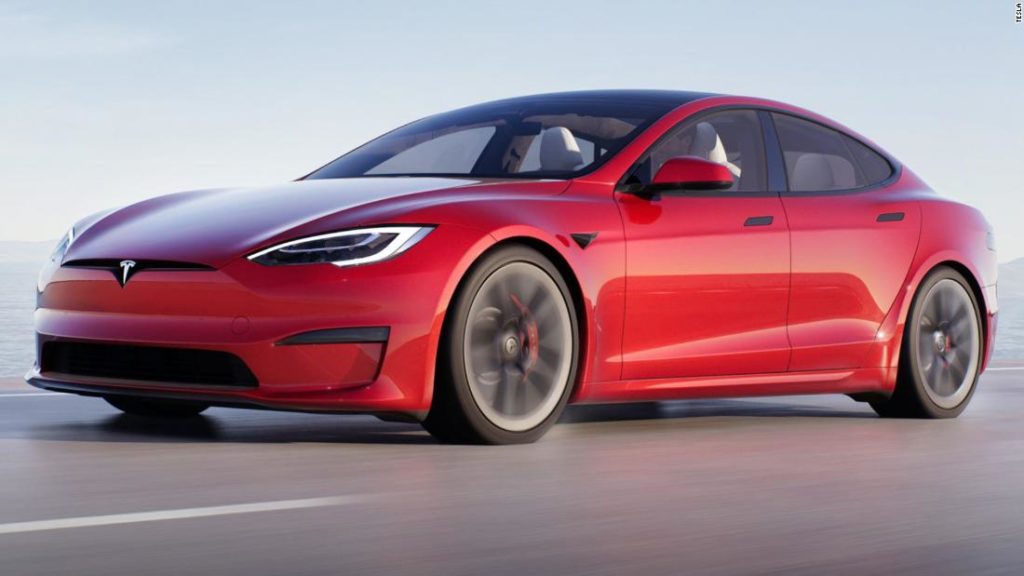Before the Tesla Model S Plaid can be run at its quickest acceleration, the car has to be put into Drag Strip Mode, which takes a few presses on the car’s big center screen, the auto magazine says. Then there’s a wait of eight to 15 minutes, according to MotorTrend, while the batteries are cooled or heated to an optimal temperature and the electric motors are chilled.
Once at the starting line, launch control is engaged by pressing the brake pedal all the way down with the left foot then pressing the accelerator to the floor with the right, MotorTrend says. Then the car goes into what Tesla calls the “cheetah stance,” dropping its front end low to the ground. When it’s time to go, the driver releases the brake pedal and the car takes off, according to the magazine.
That sort of driving mode isn’t new to the Model S Plaid. It existed on prior high-performance Teslas as well, MotorTrend writer Christian Seabaugh said in an interview with CNN Business. The version on the Model S Plaid is actually an improvement, he said, because the process doesn’t need to be redone for each run as it did in other Tesla vehicles. Acceleration runs can be done repeatedly for as much as two hours, with little loss in performance.
In this case, under conditions dictated by Tesla, the car MotorTrend tested rocketed from a stop to 60 miles per hour in just 1.98 seconds.
It’s the quickest 0-60 time MotorTrend has ever achieved in a production car. But even with all of the car’s pre-acceleration checks and procedures, that wouldn’t happen on normal roads.
MotorTrend usually conducts zero-to-60 tests on plain asphalt, the sort of surface most roads have. The tests are generally done on a drag strip, but starting from the finishing line end. That’s because the starting line end of a drag strip is coated in a special super-sticky material that gives the tires extra grip. That substance can be so sticky it’s hard to walk on without your shoes coming off. It’s not a surface most cars will ever set their tires on.
Tesla, which generally does not respond to media questions, did not reply to CNN Business’s request for a comment on the matter.
Tesla left the Model S Plaid with MotorTrend for another day so some other tests could be conducted. So MotorTrend editors decided to test the 0-60 acceleration again without Tesla’s involvement.
While the car could not go from zero to 60 in less than 2 seconds without the gooey substance, its performance was still impressive. In Drag Strip Mode, it accelerated to 60 miles per hour in 2.07 seconds, a fraction of a second longer. And that still makes it the quickest production car MotorTrend has ever tested.
Even without using Drag Strip Mode and launch control, the car will still far out-accelerate most other cars, said MotorTrend’s Seabaugh
“Just stomping on the throttle, you’re looking at about 2.5 seconds to 60,” he said.
“It’s the answer to a problem nobody has had, basically,” he told CNN Business.
You may also like
-
Afghanistan: Civilian casualties hit record high amid US withdrawal, UN says
-
How Taiwan is trying to defend against a cyber ‘World War III’
-
Pandemic travel news this week: Quarantine escapes and airplane disguises
-
Why would anyone trust Brexit Britain again?
-
Black fungus: A second crisis is killing survivors of India’s worst Covid wave

